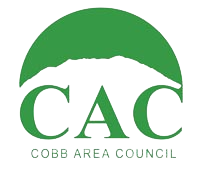[et_pb_section admin_label=”section”][et_pb_row admin_label=”row”][et_pb_column type=”4_4″][et_pb_text admin_label=”Text” background_layout=”light” text_orientation=”left” use_border_color=”off” border_color=”#ffffff” border_style=”solid”]
The standing dead trees throughout Cobb are disheartening reminders of all that we lost in the Valley Fire. Not only are they impeding the emotional recovery of the community, but are now precarious hazards that threaten the people that live here, work crews, and the new homes being built. The foresters in Boggs have shared that most of the standing dead ponderosa pines will fall within 2 years of the Fire. The recent storms have brought down several trees already, one causing damage to a vehicle. The county government is not in a position to help with abatement because they have neither the funding, nor the resources to devote to such a complicated problem. The key to clearing away the charred remains of our precious trees, is to work together as friends and neighbors.
The CAC Abatement Monitoring Committee has developed this plan to help residents communicate with their neighbors and take advantage of the free programs that are currently offered to the Cobb community.
1. Communicate with your neighbors early and often.
Talk to you neighbors about their plans for the future. If they have relocated out of the area, their new address can be found at the assessor’s office at the County courthouse. Let them know that the dead trees on their property are depressing the neighborhood, and are now considered hazardous. They can be held liable for any damage caused by the trees on their property. BUT they could be eligible for the free tree removal programs (see below).
2. Address the hazardous trees before construction begins.
Before anything new is built, have the trees removed, especially on your own property. New construction greatly complicates tree removal, and the free programs are not available if construction has begun. If the trees are not on your property, contact your neighbor to develop a plan. Here is a list of free local programs and resources.
3. Complications with Neighbors
If your neighbor is unwilling to remove their hazardous trees, and the trees could potentially cause harm to your family, work crews and new home, write them a letter explaining that they hold full legal responsibility for any damage, injury or death that occurs as a result of their hazardous tree falling on your property. If there is still no response, seek legal counsel. Keep a detailed record of all conversations and correspondence, and send all letters via certified mail with return address to verify receipt as well as First Class. This way, if they don’t sign the certified mail receipt, you will be able to point out that the First Class item was never returned to you.
Andre Ross of Ewing and Associates in Lakeport attended the December CAC meeting. Please review the minutes for a detailed description of his legal advice.
These programs offer free or low-cost help with tree removal and clean-up.
- The Trees Project is a local program using the trees as a resource for rebuilding. They work with a licensed timber operator and a mill in Ukiah, and can help remove unwanted trees. Brenda Quintero is the Founder/Director and can be reached at (925)-209-9497.
- Lake County Lumber LLC at the Hoberg’s property is also willing to cut trees down for free, but removal may be at an extra cost. Contact Dan Nelson at 866-735-4709
- Lake County Air Quality Management District and the Lake County Resource Conservation District have partnered to offer chipping of brush, branches and tree trunks up to ten inches in diameter to owners of small parcels in the Valley Fire Recovery Area. The service is available at NO COST to the landowner, who must first cut down the trees, limb them out, and haul woody materials (please no blackberries or poison oak!) to the edge of the road.
Please review the list of local tree specialists and resources.
The residents of Cobb are weary of living with the fire-killed trees, which are a blight on the community and stalling healing and recovery. The trees also jeopardize rebuilding efforts. Friends and neighbors that have left the area may not realize the emotional impact the dead trees are having on the community. Please reach out to these property owners and offer the help of our free programs and share the resources available. For further discussion, please attend CAC meetings on the 3rd Thursday of each month.
UPDATE February 7, 2017
If efforts to contact neighbors have failed, and there is a new home or structure still being threatened, the County may be able to help mitigate the danger. Contact Rob Brown for further assistance at (707) 349-2628. Be prepared to offer proof that the neighbor has been contacted and unresponsive. Rob will have the hazardous tree evaluated by a certified forester, then removed if it is deemed a threat. The County will then bill the property owner.
[/et_pb_text][/et_pb_column][/et_pb_row][/et_pb_section]
